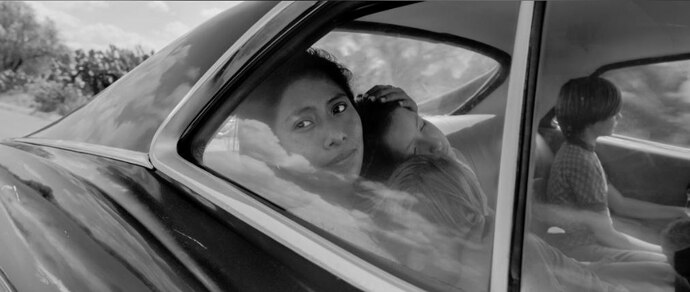The war of 'saving cinema' between the classicists and the streaming giant

For a little over a year, there has been a battle underway to ‘save’ cinema between the likes of classicists such as Steven Spielberg and streaming giant Netflix that is fast rewriting the rules of the game. The basic grouse between the two factions is what defines ‘cinema’ in this day and age.
Legendary filmmaker Spielberg wants to not only maintain the demarcation between ‘film’ and ‘television’ but also insists on having different degree of respectability in terms of treating material that emerges from these platforms, which, as a result, is visible in films produced by Netflix and the likes being treated as second-class citizens by premier film festivals like Cannes and leading film awards such as the Oscars
Don’t blame Netflix
In 2018, Cannes banned Netflix from competing for the Palme d’Or on the grounds that it refused to theatrically release its films but more importantly rejected films by some of the biggest filmmakers in the world. Similarly, the brouhaha surrounding the possibility of Alfonso Cuarón’s Roma winning the best picture at this year’s Academy Awards made many see green.

While it’s understandable for traditionalists to believe that online streaming services somehow reduce the honour associated with ‘film’ but it’s not totally correct to think that Netflix is destroying cinema. If anything, Netflix has in the recent past done the contrary. It not only took over the Oscar-winning director Cuarón’s labour of love, Roma after many big studios rejected it, it also pumped in nearly $50 million in its publicity. Cuarón’s decision to shoot Roma on 65 mm to make the narrative come alive with lifelike imagery was supported by Netflix, which, in a way was ironical as the platform does not really need that kind of fidelity.
The last few years have seen a revival of the 65 mm format with filmmakers like Paul Thomas Anderson, Quentin Tarantino and Christopher Nolan shooting Master, The Hateful Eight and Dunkirk on 65 mm negative. What’s more is how Netflix has also pumped in over $100 million to produce Martin Scorsese’s long-in-making The Irishman featuring Robert De Niro, Al Pacino, and Joe Pesci.
With the advent of digital technology, cinema is no longer what it used to be. For a few years now, every filmmaker, be it a Cuarón or a Spielberg, or the neighbourhood indie aspirant, have had the same tools to shoot and edit films. There is nearly a general consensus amongst all when it comes to shooting a film in the digital format and — save a Christopher Nolan who still insists to shoot on film — nearly every major filmmaker has made the shift to shooting digital. But what has revolutionised and, in some way, also truly democratised filmmaking is the manner in which Netflix has changed the distribution pattern.
Today, a filmmaker’s work has a ready market of over hundreds of countries across continents the moment Netflix comes on board but more than reaching households around the globe, the possibility of a new film being seen in the living room on the same day as a film’s theatrical debut has rattled old-school.
Breaking the screen
Online streaming has done away with the need of a theatre to watch a film or waiting for DVDs or the film to come up on television and with this, a long-standing tradition of nearly 70 years has come to an end.
The fight to save cinema is about to enter a new phase with Spielberg poised to create some kind of wall between film and Netflix. There are rumours that he might ask for a mandatory three-month delay between a film getting a theatrical release and being shown on streaming platforms.
Distribution games
There is also a sense of some kind of an identity war considering that Spielberg represents the old system while younger filmmakers, and audiences alike, want the freedom and power that Netflix bestows upon them. For filmmakers like Ava DuVernay, the value of Netflix increases as unlike traditional film distribution their work, say a film like Selma, now gets distributed across 190 countries at the click of a button. Netflix has also come as a big relief for documentary filmmakers who automatically get a ‘wide release’ and even films that were lost to time like Orson Welles’ swan song The Other Side of the Wind that released on Netflix after three-decades of lying in the cans. Nothing is more classic than a Scorsese film and if a Netflix is fine with a budget of $125 million for a non-summer tent-pole film like The Irishman, a gangster flick with three actors in their 70s, then it doesn’t really hate cinema. Spielberg might feel that he is saving cinema but the question remains — who is killing cinema?
(Courtesy of Mail Today)

